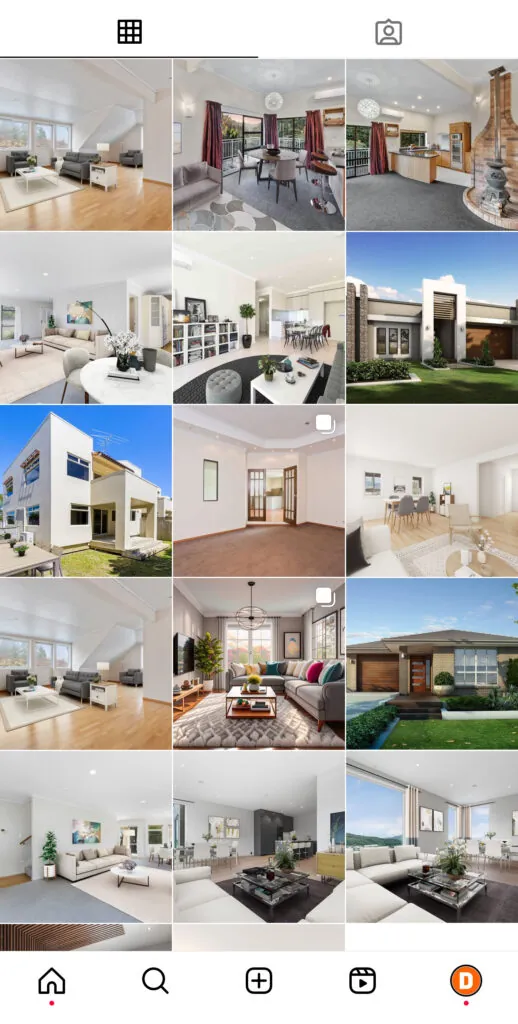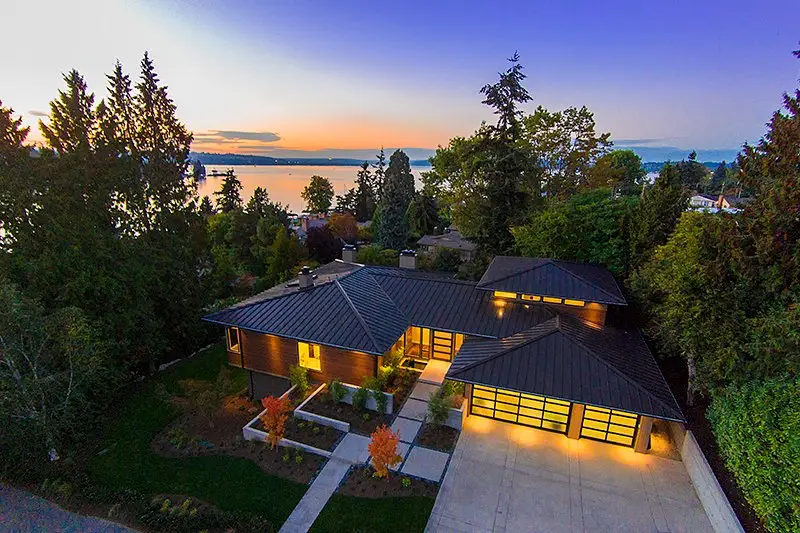
Virtual Staging and Home Buying Trends of The New Generation
Introduction
Home buying trends have evolved significantly in recent years, influenced heavily by technological advancements and changing consumer behaviors. Among these advancements, virtual staging stands out as a transformative tool that aligns perfectly with the preferences of the new generation of homebuyers. Millennials and Gen Z are reshaping the real estate market, and understanding how virtual staging impacts their buying decisions is crucial for sellers and real estate professionals.
What is Virtual Staging?

Before: Empty Room

After: Virtual Staging by Digihomestudio.com
Virtual staging is a digital process where furniture and decor are added to photos of empty or sparsely furnished homes using specialized software. Unlike traditional staging, which involves physically arranging furniture in a property, virtual staging is done entirely online. This innovative approach offers numerous benefits, making it a popular choice in today’s home buying trends.
The primary advantages of virtual staging include cost-effectiveness, flexibility, and visual appeal. Traditional staging can be prohibitively expensive, requiring the rental and transportation of furniture, which adds significant costs and logistical challenges. Virtual staging, on the other hand, is much more affordable and can be completed quickly. Additionally, it offers unmatched flexibility; sellers can easily experiment with different styles and layouts to see what appeals most to potential buyers.
You may want to read more: “Virtual Staging vs. Home Staging: Which is Right for You?”
New Change in Home Buying Trends
The new generation of homebuyers, primarily Millennials and Gen Z, have distinct characteristics and preferences that differentiate them from previous generations. Understanding these preferences is essential to leveraging virtual staging effectively in current home buying trends.
Millennials and Gen Z value technology and convenience. They are digital natives who rely heavily on online resources for information and decision-making. Social media, online reviews, and virtual tours play a crucial role in their home buying journey. This tech-savvy generation prefers solutions that are quick, efficient, and visually appealing, making virtual staging a perfect fit.
Gen Z and Millennials aren’t the only ones using social media platforms as their primary source of information. According to one forecast, approximately 11.3 million baby boomers will purchase a product via social media. Another study found that 83.9% of baby boomers say they feel like social media has improved their lives (National Association of REALTORS® – NAR).
Another key characteristic of these generations is their desire for personalization and customization. They want homes that reflect their unique tastes and lifestyles. Virtual staging allows for personalized and customized presentations, helping potential buyers envision how a space can meet their needs. Moreover, environmental consciousness is another important factor for these generations. Virtual staging is a more sustainable option compared to traditional staging, as it eliminates the need for physical materials and reduces the carbon footprint.
The Role of Social Media in Home Buying
Social media has become an integral part of home buying trends, especially for the new generation. Platforms like Instagram, Pinterest, TikTok and Facebook are not just for social interactions; they are powerful tools for marketing and discovery. Real estate professionals who harness the power of social media can reach a broader audience and engage potential buyers more effectively. One report found that a whopping 80% of Gen Zers spend time on YouTube, another 75% on Instagram and about 60% on TikTok. And 35% of all Gen Zers spend over four hours each day on social media (NAR).
Visual content is king on social media. High-quality images and videos attract attention and drive engagement. This is where virtual staging shines. By creating visually stunning photos of homes, virtual staging can significantly enhance the appeal of property listings on social media platforms. These platforms enable real estate agents to showcase properties in a way that resonates with the aesthetics and preferences of younger buyers.
For example, Instagram’s focus on beautiful imagery makes it an ideal platform for sharing virtually staged photos. Pinterest, known for its inspirational content, can be used to create boards that showcase different staging styles and home decor ideas. Facebook’s extensive reach allows for targeted advertising, ensuring that staged listings are seen by the right audience. By leveraging these platforms, real estate professionals can capitalize on home buying trends driven by social media.
How Virtual Staging Meets New Generation Preferences
Virtual staging meets the new generation’s preferences in several ways, aligning with the latest home buying trends. Customization and personalization are at the forefront. Virtual staging allows for tailored designs that cater to individual tastes, from modern minimalism to cozy rustic styles. This flexibility helps potential buyers connect with the property on a personal level.
The new generation also values speed and efficiency. Virtual staging provides a quick turnaround, enabling properties to be marketed faster. In a competitive real estate market, the ability to list and promote a home quickly can make a significant difference. Additionally, virtual staging’s cost-effectiveness appeals to budget-conscious Millennials and Gen Z buyers, who often face financial constraints.
Sustainability is another crucial factor for younger buyers. They are more likely to support and prefer businesses and practices that are environmentally friendly. Virtual staging, being a digital process, reduces waste and the need for physical resources, making it an eco-friendly alternative to traditional staging methods.

Good news: You can create professional staged photo listings faster with Digihomestudio.com to increase your sales.
We have a network of world-class virtual stage editors and designers in Vietnam. To ensure the best level of service, the customer service team is located in the US.
Our virtual home staging services include:
- Staging for empty or furnished rooms
- Change the color of the walls and floors
- Virtual renovation
- Erase furniture and small objects
- And much more!
If you’re prepared to elevate your real estate marketing strategies, reach out to Digihomestudio.com now and experience the benefits of collaborating with one of the top virtual staging firms available today.
By the way, you can refer to the following tips to make staged photos on your website more attractive.
5 Tips to Make Virtual Staged Photos Stand Out on Your Website
To make the most of virtual staging and align with home buying trends, it’s important to ensure that your staged photos stand out on your website. Here are five tips to achieve this:
1. High-Quality, Realistic Staging:
- Invest in Professional Services: Use high-resolution images and realistic 3D models to create stunning visuals. Professional virtual staging services can ensure that the images look authentic and believable.
- Attention to Detail: Incorporate realistic elements such as shadows, reflections, and lighting that match the room’s natural features. This enhances the overall believability of the staged photos.
2. Consistent Style and Theme:
- Harmonize Design Elements: Choose a design style that complements the property’s architecture and appeals to the target market. Consistency across all photos creates a cohesive and attractive visual narrative.
- Color Coordination: Ensure that the colors of the virtual furniture and decor match or complement the room’s existing color scheme, creating a harmonious and inviting atmosphere.
3. Highlight Key Features:
- Focus on Selling Points: Use virtual staging to draw attention to the property’s unique features, such as a fireplace, large windows, or an open floor plan. Arrange furniture in a way that accentuates these elements.
- Multiple Angles: Provide multiple views of key areas to give potential buyers a comprehensive understanding of the space. Different perspectives can showcase the room’s functionality and flow.
4. Interactive Elements:
- Virtual Tours and 360-Degree Views: Incorporate interactive features such as virtual tours or 360-degree views. These tools allow users to explore the space more thoroughly, increasing engagement and helping them envision living in the property.
- Before and After Comparisons: Show before and after images to highlight the transformation achieved through virtual staging. This can be particularly effective in demonstrating the potential of an empty or cluttered space.
5. Optimize for Web Performance:
- Fast Loading Times: Ensure that the images are optimized for quick loading without compromising quality. Compress images appropriately to balance clarity and performance, as slow-loading pages can deter potential buyers.
- Mobile-Friendly Design: Make sure the staged photos look great on all devices, including smartphones and tablets. Given the high number of users browsing properties on mobile devices, responsiveness is crucial.
Conclusion
Home buying trends are rapidly evolving, and virtual staging has emerged as a powerful tool in this dynamic landscape. The synergy between virtual staging and the preferences of the new generation of homebuyers, primarily Millennials and Gen Z, cannot be overstated. By offering cost-effective, customizable, and visually appealing solutions, virtual staging meets the demands of tech-savvy, design-conscious, and environmentally aware buyers.
As real estate professionals and sellers adapt to these trends, embracing virtual staging can significantly enhance the appeal of properties and streamline the marketing process. High-quality, consistent, and optimized virtual staged photos can make a substantial difference in attracting and engaging potential buyers. By leveraging social media and incorporating interactive elements, the impact of virtual staging can be maximized, aligning perfectly with the latest home buying trends.
Further reading:
- The Effective Impact of Virtual Staging in Real Estate Sales
- Tips to Sell Home Faster with Virtual Staging
- Top 5 Virtual Staging Design Trends in 2024






Leave a Reply